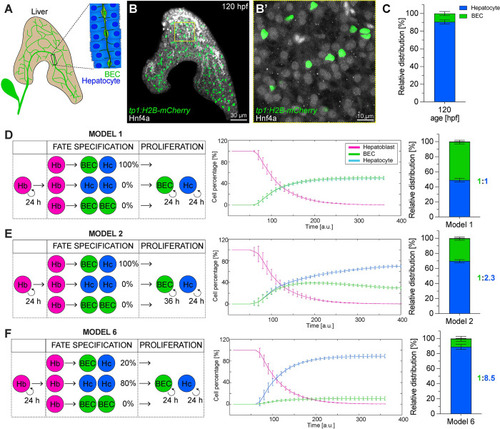Fig 1
- ID
- ZDB-FIG-231005-7
- Publication
- Unterweger et al., 2023 - Lineage tracing identifies heterogeneous hepatoblast contribution to cell lineages and postembryonic organ growth dynamics
- Other Figures
- All Figure Page
- Back to All Figure Page
|
Establishment of BEC and hepatocyte lineages: in vivo cell type quantification and in silico modelling ( |

